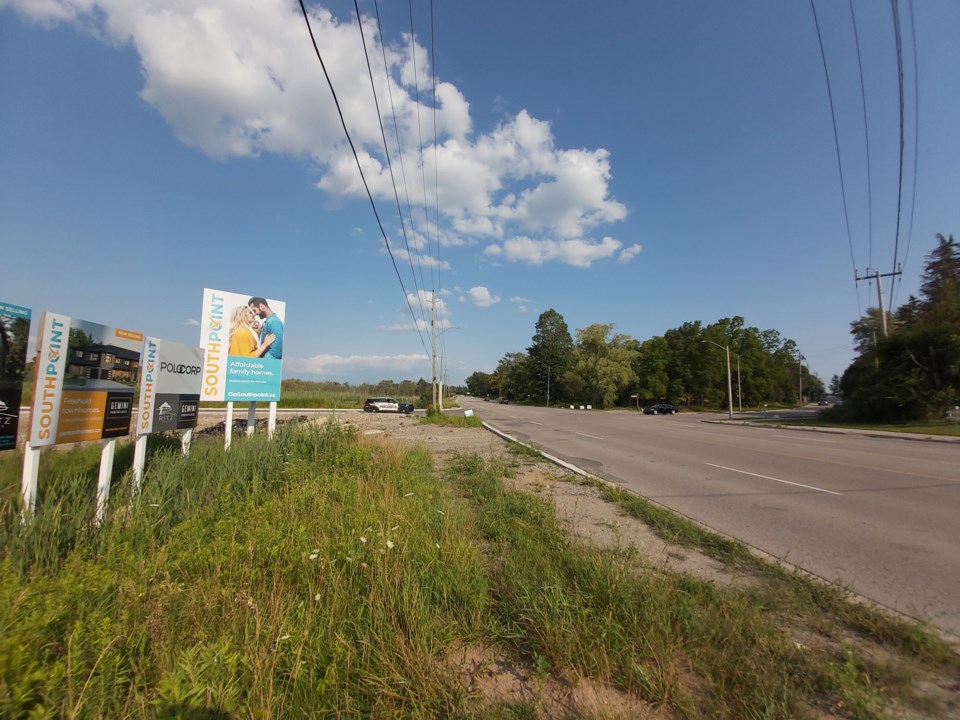The province's recent flip flop over changes to Waterloo region's official plan has given the City of Cambridge an opportunity to suggest its own changes in a direct letter to the new minister of Municipal Affairs and Housing.
In a draft letter back to Minister Paul Calandra, deputy city manager Hardy Bromberg agrees with many of the changes made to the region's official plan in April and suggests further amendments to increase housing density along Dundas Street South to align with planned transit.
The city hopes to see the land around Highway 8 utilized to absorb more residential density not currently recognized by planning policy.
"As this area is not within any of our established neighbourhood areas, yet is adjacent to our southern bypass, it has great potential for high rise density," reads the city's letter to Calandra.
On Tuesday, council will be asked to endorse the letter and send it on behalf of the mayor prior to a Dec. 7 deadline.
The opportunity to respond to the minister comes six months after the province made 12 modifications to the Region of Waterloo's official plan, called ROPA 6, which outlines growth to the year 2051.
In Cambridge, those changes included urban boundary expansions in north Cambridge between the current urban limit and countryside line around the Waterloo Region International Airport with a goal to substantially increase housing supply.
The modifications also included site specific development permissions for a property on Queen Street, and an employment conversion of lands on Main Street.
In the more than two months since former housing minister Steve Clark resigned over the Greenbelt scandal, however, Calandra introduced draft legislation to reverse modifications made across the province and bring Waterloo region's ROPA 6 plan back to its original state.
Calandra is seeking input on what to do from all affected municipalities.
In its letter, the city says it's supportive of provincial amendments in north Cambridge where it hopes to complete a residential node near Riverbank Drive and satisfy outstanding Ontario Land Tribunal disputes.
Adding more land for housing in those areas would also support future transit, which includes the planned Breslau GO station, reads the draft letter.
The same goes for land north of Middle Block Road, south of Kossuth Road and west of Speedsville Road.
The city also wants to extend the urban boundary into lands north of Maple Grove Road and west of Hespeler Road to retain residential development potential and allow the city to begin background studies "to create a well planned expansion to the Hespeler community."
The city says it needs to develop a Master Environmental Servicing Plan and secondary plan to determine environmental constraints, transportation, servicing and land uses there.
Exploring expansion capacity at the nearby Hespeler Wastewater Treatment plant is also required.
Changes the city wants to see maintained in the city's south end include 1140 Main St., which is adjacent to a secondary plan scheduled for completion this month that could allow up to 20 storey residential towers.
Council passed a resolution in 2021 asking that 1140 Main be removed from an employment area to allow for residential and commercial development, so the city was happy to see that change applied in April of this year.
A change the city didn't like was the addition of land between the Grand River and River Bank Drive that doesn't align with anyone's idea of good planning, nor the city's housing pledge.
The city also wants a sliver of land between Queen Street and the Speed River in Hespeler off the table since it's in the floodplain, is difficult to access and the landowner hasn't responded to the city's request to file a planning application.
Calandra's proposed legislation would also amend the provincial planning act to introduce immunity provisions related to the making, amending or revoking of minister's zoning orders (MZOs).
An MZO allows the minister to approve development applications while controlling the use of specific land, setting special requirements for new development, such as minimum lot sizes, frontage, access, and servicing.
An MZO famously helped fast-track approvals for the Amazon warehouse in Blair.
It could also remain in play for the planned redevelopment of the Smart Centre lands at Pinebush and Hespeler roads, where early proposals suggested the retail centre could be converted to residential zoning to accommodate 10,000 units in dozens of high rise towers.
While no specific changes to MZOs are currently in the works, the province says this new provision in the planning act would "help mitigate risk should revocations be necessary as the ministry reviews a use it or lose it policy."





